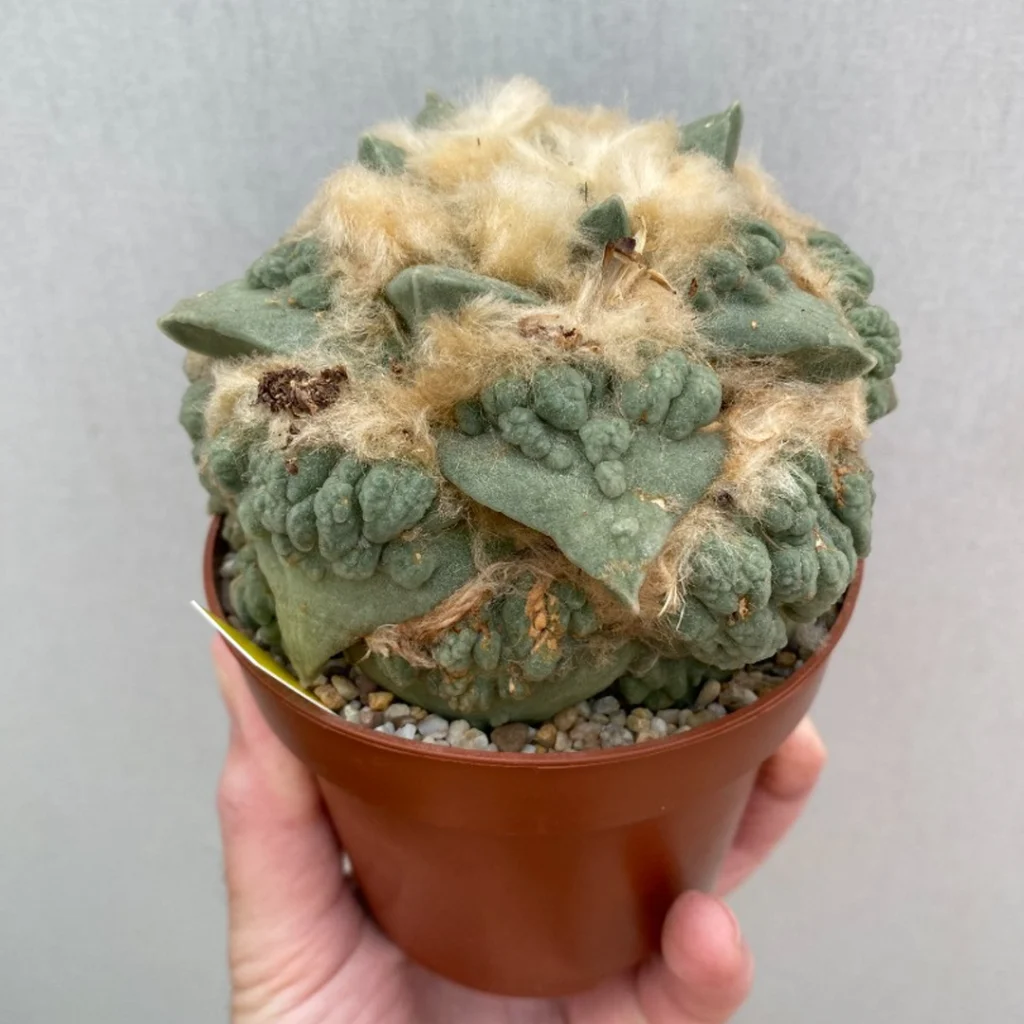Discocactus Variegated is a captivating and rare variation of the Discocactus genus, known for its distinctive and vibrant appearance. While Discocactus species are already celebrated for their flattened, disc-like shape, the variegated variety adds an extra layer of beauty with unique color patterns and irregular markings. These cacti are characterized by their multi-toned bodies, which feature green, yellow, and sometimes white or pink hues in irregular stripes or patches.
Native to South America, Discocactus Variegated thrives in rocky, dry habitats where it grows slowly, forming a spherical base and a flattened, disc-like top. The variegated coloration is a result of a natural mutation in the plant’s pigment, giving it a more striking and ornamental look compared to the non-variegated varieties. This rarity makes Discocactus Variegated highly sought after by cactus collectors and plant enthusiasts alike.
In addition to its unique appearance, the variegated Discocactus produces large, beautiful funnel-shaped flowers that typically bloom at night. These flowers can range in color from white and pink to purple or yellow, offering a delightful contrast to the cactus’s colorful body. While the plant itself can be slow-growing, its beauty and rarity make it a prized possession in any collection.
How to Care
- Light: Provide bright, indirect light or partial sun for optimal growth. Variegated plants may require slightly more light than regular Discocactus, as the lighter parts of the plant can be more sensitive.
- Watering: Water sparingly, allowing the soil to dry out completely between waterings. Overwatering can cause root rot, so ensure the soil is well-draining.
- Soil: Use a cactus-specific soil mix or create your own by mixing sand, perlite, and pumice to ensure quick drainage.
- Temperature: Keep temperatures between 20°C and 30°C (68°F to 86°F). Protect from frost, as this cactus is sensitive to cold.
- Fertilizer: Feed during the growing season (spring to summer) with a diluted cactus fertilizer to encourage healthy growth and vibrant coloration.
- Repotting: Repot every 2-3 years or when the plant outgrows its container, ensuring there’s enough space for the roots to spread.





















